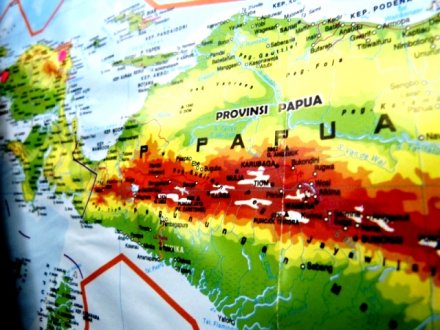Supporting the Continuation of the Realization of Papua’s Special Autonomy
By: Daniel Alfred Pagawak ) *
Since 2002 the Provinces of Papua and West Papua have received special autonomy funds to date reaching Rp. 126.99 trillion. Because the DAU also continues to increase each fiscal year, the annual funds which initially amounted to Rp 1.38 trillion in 2002, will jump to Rp 13.05 trillion in 2020. The period of disbursement of funds mandated by the Special Autonomy Law will be completed next year.
The President’s Special Staff ( Stafsus ), Billy Mambrasar, thinks that the Papua Special Autonomy has succeeded in improving the education of Papuan children. “The enthusiasm for the special autonomy allocation is the highest for education. I come from an underprivileged family but can take higher education using the special autonomy fund ,” said Billy in Jakarta recently.
Billy is not alone. Vanda Astri Korisano and Martha Itaar, two Papuan women also succeeded in becoming pilots for the national airline Garuda Indonesia after studying at Nelson Aviation College , New Zealand, with the funding of Papua’s Special Autonomy. Hundreds of Papuan students are also currently being sent to study abroad with special autonomy funds .
In 2020, the Papua Provincial Government will disburse specialist doctor scholarships to recruit 112 Papuan doctors. Meanwhile 471 high school students are also financed to attend high school. A similar program has been running from previous years. In 2019, out of a total of 425 students who passed the scholarship, 161 of them were funded to study abroad and 264 from within the country.
The data also shows the excesses of the lack of a grand design and the lack of serious monitoring, evaluation and supervision of the realization or disbursement of Special Autonomy funds, which are clearly illustrated during the 18 years that Papua’s Special Autonomy funds have been disbursed, but have failed to reach significant outcomes . In 2019, the Human Development Index (HDI) published by the Central Statistics Agency (BPS) still places Papua (60.84) and West Papua (64.70) at the bottom of Indonesia. This figure is far below the national average of 71.92 in the same year.
In 2020, BPS also recorded that the illiteracy rate in Papua at the age of 15 years and over reached 22.10 percent, down from 25.54 percent in 2003. This decrease is not comparable to the national average which has fallen from 10.21 percent to 4 .00 percent in the same period.
Judging from the net enrollment rate (NER) of primary schools, in 2020 only Papua alone is below 90 percent with a figure of 79.34 percent, far below the national average of 97.69 percent. This figure is down from 83.86 percent in 2003 while the national average has increased from 92.55 percent in the same year.
For the NER at SMP and equivalent, in Papua it was 47.81 percent in 2003 compared to 63.49 percent of the national average. When the national average managed to increase by almost 20 percent to 80.12 percent, the AMP at the junior high school level in Papua only increased by ten percent to 57.95 percent. Likewise at the SMA level, AMP Papua increased by 14 percent from 30.11 percent in 2003 to 44.31 percent while the national average increased by 20 percent from 40.56 percent to 60.67 percent.
Meanwhile, in the Public Health Development Index (IPKM) report released by the Ministry of Health in 2019, Papua and West Papua are still distended numbers. In 2018, Papua recorded an IPKM of 0.4888 points while West Papua recorded a number of 0.5491. This figure is lower than the national achievement of 0.6087. The increase in points in Papua and West Papua during the five years since 2013 is also lower than the national increase. IPKM is calculated based on a number of indications. One of the assessments came from the Health Service Sub-Index. In this regard, Papua and West Papua are also at the bottom of the list since the start of the calculation using the new method in 2010.
In 2018, Papua’s scores were 0.3166 and West Papua was 0.3724, well below the national average of 0.4398. Referring to the Ministry of Health’s report, the score for the Health Service Sub-Index in Papua is the lowest compared to other sub-indices.
So far, the government has submitted the draft revision of the Special Autonomy Law to the DPR. The discussion is scheduled for January 2021. This means that next year the dynamics in Papua will be heavily colored by the issue of the continuation of this special autonomy . If we look at the similar dynamics leading up to the formation of the Special Autonomy Law, it has its own potential vulnerabilities. What has to be done is whether Commission II of the DPR RI or Baleg or Panja, which will discuss the revision of the Papua Special Autonomy Law, must resolve it as soon as possible, so that there is a legal umbrella for the disbursement of Special Autonomy funds, otherwise the separatist groups will have the “entrance” to confuse Papua. In addition, the Papuan people must believe that the sustainability of Otsus in the future will be better, because the mechanism will be more structured and it is even estimated that the Government Regulation regarding this issue will be made as detailed as possible by the government to close the huge gap in the Special Autonomy fund, which is not undermined by lecherous and unscrupulous individuals. nationalist. Hopefully.
* The author is an observer of Papua issues.
